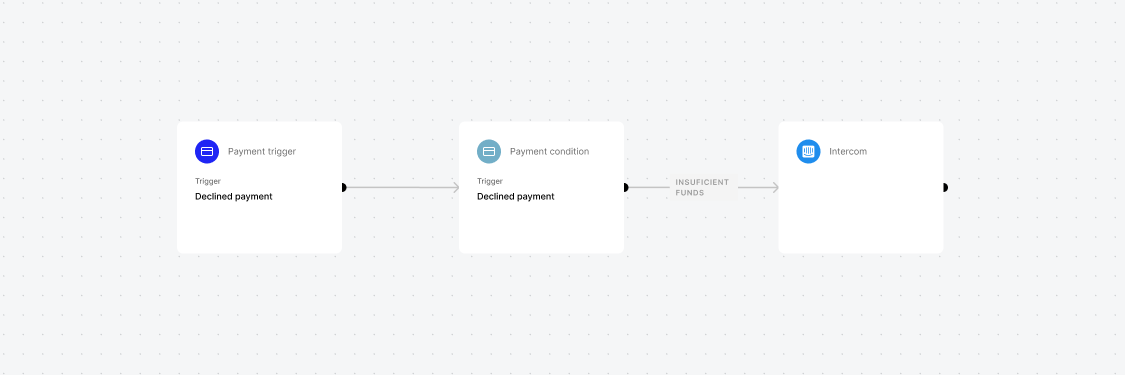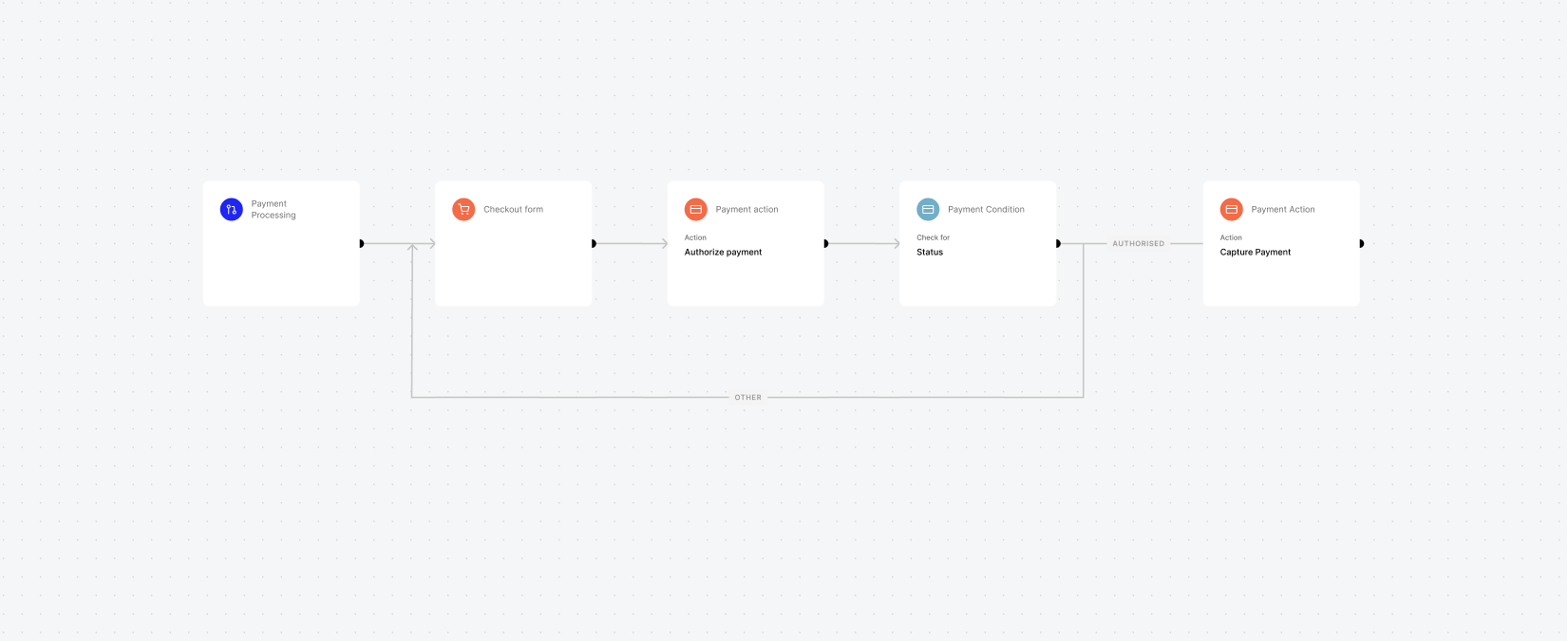Automations
The no-code canvas allows a user to construct Automations, which at it's core is a “when-then”. By defining your “when” (a trigger) and your “then” (a set of conditions and actions to execute after your when), you define steps and instructions to enable powerful use-cases to improve your payment performance and improve operations.
There are two types of Automation you can build within the WhenThen platform:
- General Automations
- Payment Processing Automations
General Automations
General automations do not involve the direct processing of a transaction, however may relate to the outcome of a transaction being processed (e.g., when a transaction is successful, send a customer confirmation email).
As such, general automations do not require integration with WhenThen APIs as they do not require the WhenThen platform to be involved in the processing mechanics of a payment.
If you want payment events from your Payment Service Provider to trigger the start of an automation, you'll have to connect and authenticate your Processor through the Connections page.

Payment Processing Automations
Payment processing automations involve and relate to the authorization, processing and capture of payments and are always initiated by the Payment Processing Trigger.
Because Payment Processing Automations require WhenThen to manage the payment on your behalf, you must integrate the WhenThen APIs before you can successfully launch your Instruct Payment Automation. We've made it easy for you and your dev team to do that in our Documentation available here.
Once you have the WhenThen APIs integrated, you're ready to create and launch your Payment Instruct Automation and build payment flow logic to improve your payment success!


